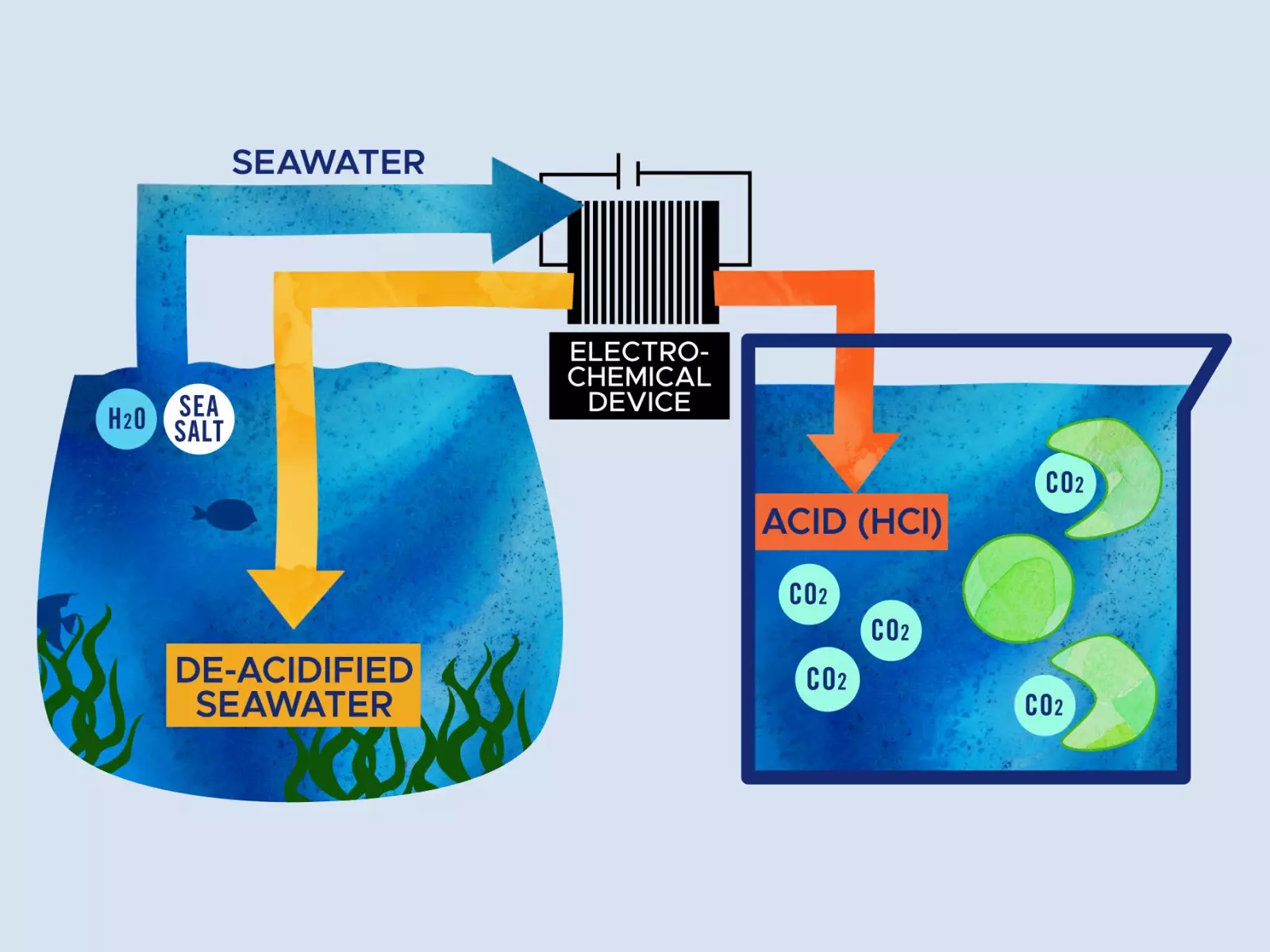Marine algae play a crucial role in our ecosystem, from producing oxygen through photosynthesis to feeding fish and shellfish. The possibility of utilizing marine algae for the production of eco-friendly plastics or fuel presents an exciting opportunity for environmental sustainability. However, the process of cultivating algae at a commercial scale, known as aquaculture, often involves a significant carbon footprint due to the requirement of carbon dioxide to accelerate growth.
Challenges in Aquaculture
Traditionally, carbon dioxide for algae cultivation is sourced from natural gas refineries, where it is compressed and transported for injection into algae ponds. Unfortunately, the processing and transportation of this carbon dioxide result in substantial emissions, counteracting the benefits of carbon dioxide removal from algae cultivation. This raises the critical question of how to make aquaculture more carbon neutral.
Research from PNNL
Researchers from the Department of Energy’s Pacific Northwest National Laboratory (PNNL) have proposed a solution to this problem by introducing marine carbon dioxide removal (mCDR) alongside algae cultivation. By utilizing the acid byproduct of an electrochemical process that enhances ocean alkalinity, researchers have demonstrated the potential to accelerate algae growth. This innovative approach not only benefits the aquaculture industry but also provides a sustainable way to utilize the acid byproduct that has previously hindered the scalability of certain electrochemical mCDR techniques.
The process of ocean acidification, driven by the absorption of excess carbon dioxide from the atmosphere, poses a significant threat to marine ecosystems. To mitigate this effect, scientists have developed bipolar membrane electrodialysis, an electrochemical technology that can remove acidity from seawater. By splitting seawater into acidic and basic streams, this process aims to increase ocean alkalinity through ocean alkalinity enhancement, ultimately neutralizing ocean acidity and facilitating carbon dioxide absorption.
Algae, known for their carbon-eating capabilities and rapid growth, have emerged as a promising natural solution for carbon dioxide removal. Through photosynthesis, algae absorb carbon dioxide and produce oxygen, making them efficient carbon sequestrators. Researchers have shown that by introducing the acidic stream generated from the electrochemical process to algae cultivation, the algae’s growth rate can be significantly boosted. This innovative approach leverages the carbon dioxide released by the acid to enhance algae growth, demonstrating the potential of utilizing waste streams for sustainable practices.
Future Applications of Algae Cultivation
Looking ahead, the integration of electrochemical marine carbon dioxide removal with the aquaculture industry holds promise for a more sustainable future. The synergy between mCDR and algae cultivation can not only facilitate carbon dioxide removal but also open doors for the production of biofuels and the enhancement of shellfish industries. By envisioning a holistic approach to combatting climate change, researchers aim to harness the potential of marine algae to drive environmental innovation and sustainability.
The collaboration between technology and nature-based solutions offers a pathway towards a more sustainable future. By maximizing the carbon sequestration capabilities of marine algae and integrating innovative approaches such as mCDR, we can work towards a greener and more environmentally conscious society. Through ongoing research and collaboration, we have the opportunity to leverage the natural power of marine algae to combat climate change and create a healthier planet for future generations.


Leave a Reply